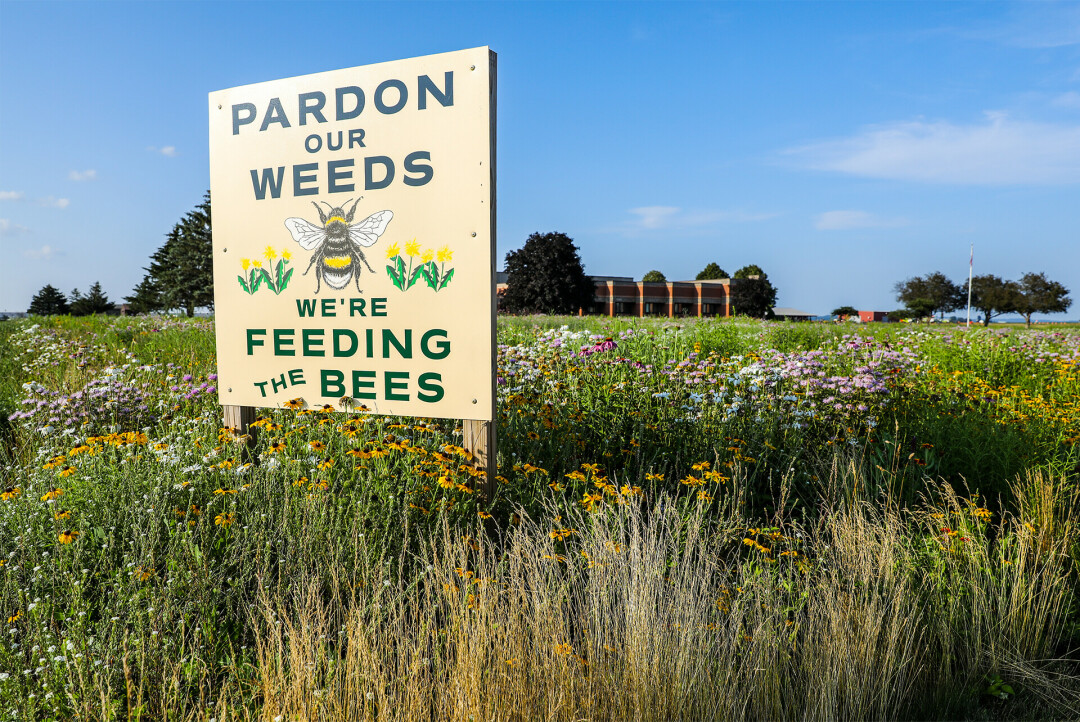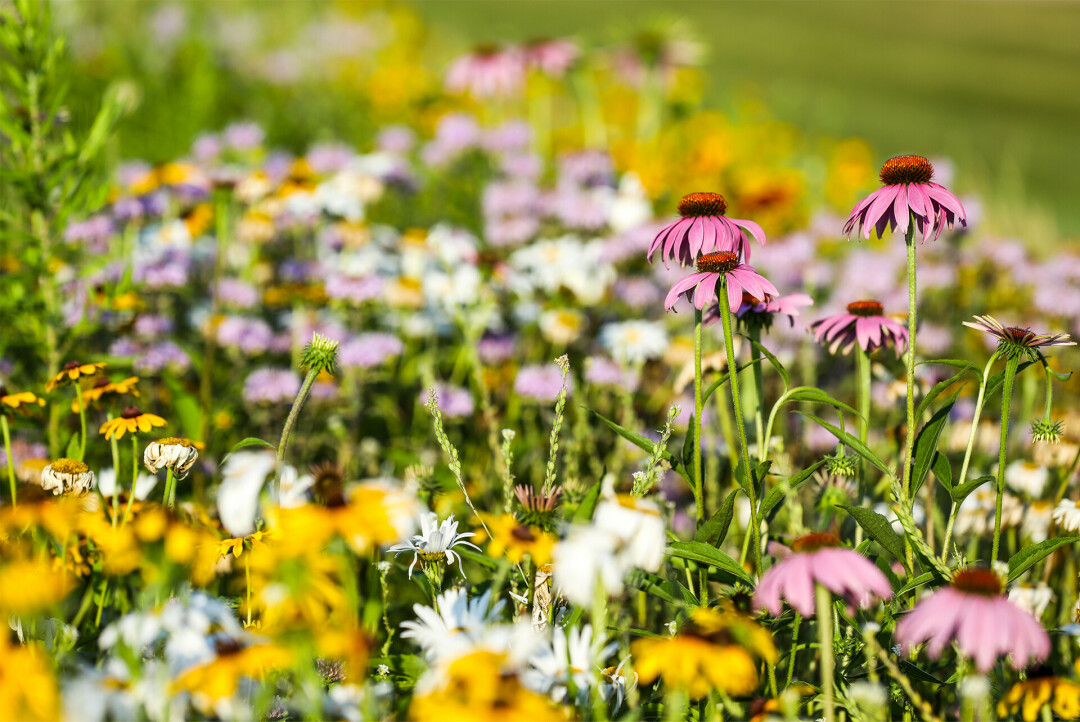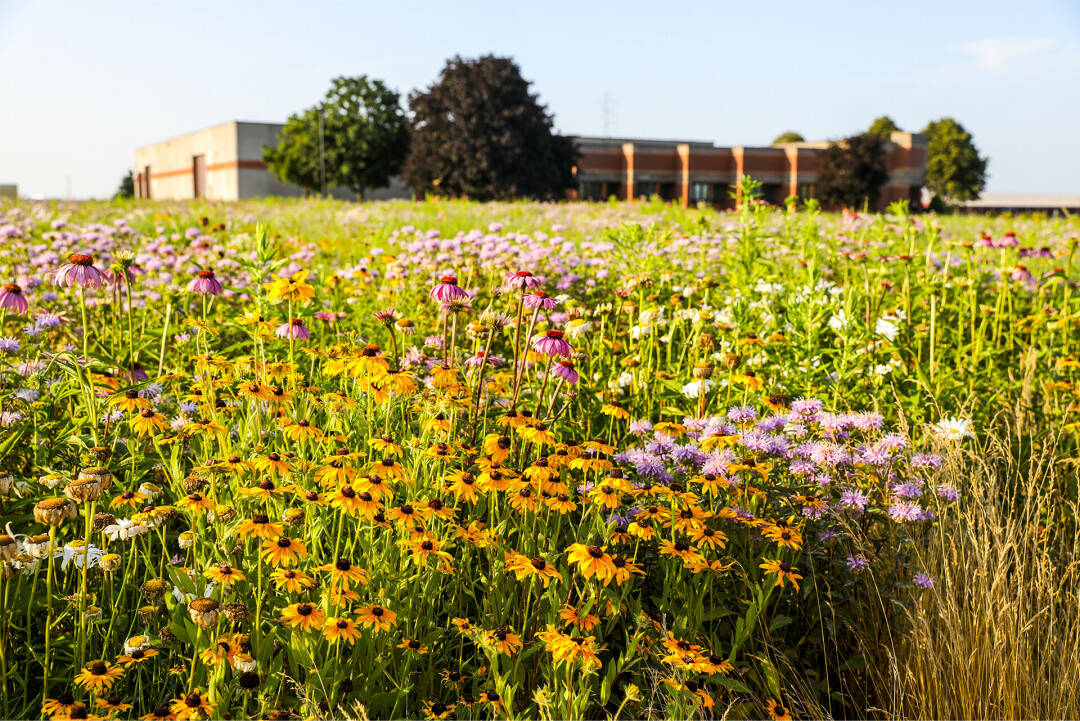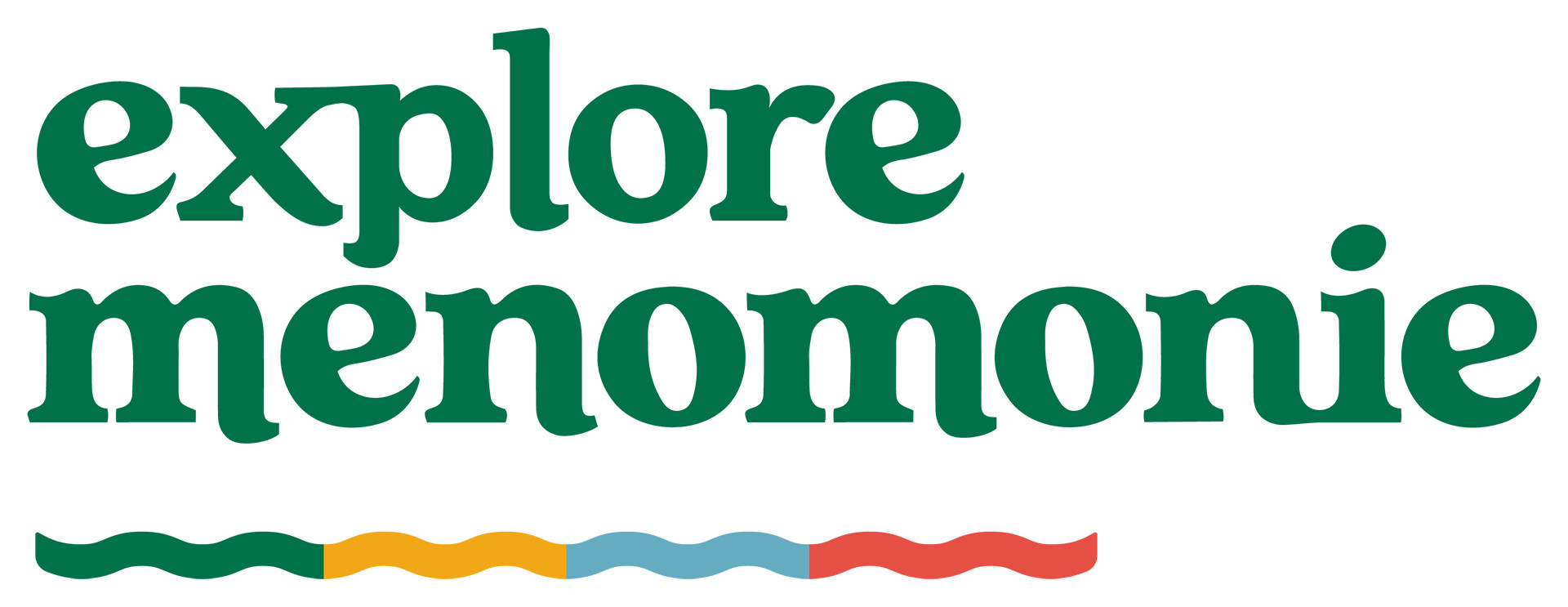Community Orgs Outdoors Environment
BUSY BEES: Dunn Energy Cooperative’s Wildflower Field a Hub for Pollinators
several years in the making, pollinator habitat flourishes in what was a plain lawn
McKenna Scherer, photos by Andrea Paulseth |

Summer is a busy season for Dunn Energy Cooperative, as they camp up construction and maintenance efforts (summertime should be called “construction season” around here), and it’s also a busy season for pollinators. The cooperative has a literal front-row view of the latter thanks to the wildflower field blossoming on its lawn.
“Some years back there were rumblings of the possibility of utilities being required to plant so many acres of pollinator habitats based on the miles of line they serve,” recalled Jolene Fisher, the cooperative’s director of member and employee engagement. “This never came to fruition, but we as a cooperative thought, ‘Why not?’ ”
With a significant amount of green space around the cooperative’s building and Fisher’s own affinity toward flowers nudging the project along, the board of directors supported moving forward with the planting of a pollinator habitat onsite.

In the fall of 2021, about a half-acre of grass was killed and prepped, and Fisher headed over to the Elk Mound Seed Store. Leaving with two mixes of wildflower seed – a “birds and blooms” mix and a “bees and butterflies” mix – Fisher and her son hand-sowed the half-acre plot. Mixing the appropriate amount of seed with a five-gallon bucket of sawdust and broadcast spreading it one bucket at a time, the seeds were sown and time did its thing.
While the lawn can look unkempt in the spring, Menomonie’s Vintage Sign Shop crafted a couple of signs to place along the road to clue folks in on what’s growing. Today, the plot is home to dozens of flowers and herbs, Fisher said.
Pollinators now peruse the field, filled with Purple Coneflower and Wild Bergamot, Oxeye Daisies and Rocket Larkspur, Blue Flax, Yarrow, Anise Hyssop, and more. “By creating this habitat, not only are we creating food for many different pollinators, but we are also creating habitat for wildlife to live in,” Fisher said. “Any given day you’ll find birds, bees, dragonflies, and more out there. And if you ask me, the beauty of the flowers looks better than a manicured lawn any day.”
“By creating this habitat, not only are we creating food for many different pollinators, but we are also creating habitat for wildlife to live in. ... And if you ask me, the beauty of the flowers looks better than a manicured lawn any day.”
JOLENE FISHER
DUNN ENERGY COOPERATIVE MEMBER & EMPLOYEE ENGAGEMENT DIRECTOR
Plus, a natural habitat like the wildflower field involves less maintenance than a traditional lawn. The cooperative only needs the area mowed once per year, Fisher said.
She also pointed out the importance of pollinator habitats to Wisconsin’s agriculture and economy, something that’s been emphasized by environmental organizations and even politicians in recent years. State Rep. Lee Snodgrass, D-Appleton, told PBS Wisconsin in a 2023 interview that some farmers could see a 50-70% decline in crops like apples, honey, and cranberries without pollinators. “Our crops are incredibly dependent on pollinators,” Snodgrass said.
“If I could impart anything to anyone, it would be to plant flowers. Native wildflowers are easy, they will last forever, they are so beneficial for our environment,” Fisher said. “And they’re beautiful to boot!”

The wildflower field can be viewed at Dunn Energy Cooperative (N5725 600th St., Menomonie) • Learn more about Dunn Energy Cooperative online


